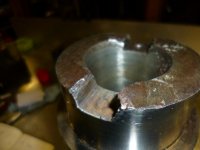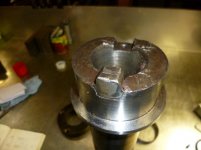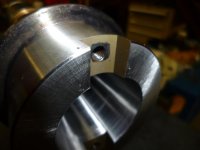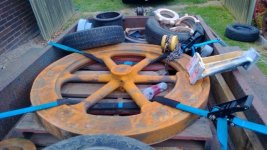machtool
Diamond
- Joined
- Jun 22, 2004
- Location
- Melbourne Australia
Gentlemen.
Thought I'd show you some thing that's been in and out of my shop like a yo-yo all week. Little over a week ago, I got sent this spindle cartridge over from Perth for a rebuild. Quoted it sight unseen as I've done a lot of these over many years.
This is what they sent me.
Snapped bolts in the spindle drive keys, so they MIG welded a set in.

I suspect the damage to the face, was them trying to peen some meat, back into the key slots.



You got to love a fitter that pulls bearings out of Precision Housing's by taking to them with a welder.

More to follow.
Phil.
Thought I'd show you some thing that's been in and out of my shop like a yo-yo all week. Little over a week ago, I got sent this spindle cartridge over from Perth for a rebuild. Quoted it sight unseen as I've done a lot of these over many years.
This is what they sent me.
Snapped bolts in the spindle drive keys, so they MIG welded a set in.

I suspect the damage to the face, was them trying to peen some meat, back into the key slots.



You got to love a fitter that pulls bearings out of Precision Housing's by taking to them with a welder.

More to follow.
Phil.







 , as I am genuinely interested of his methods if they are viable )
, as I am genuinely interested of his methods if they are viable ) Please we are all big boys here)
Please we are all big boys here)